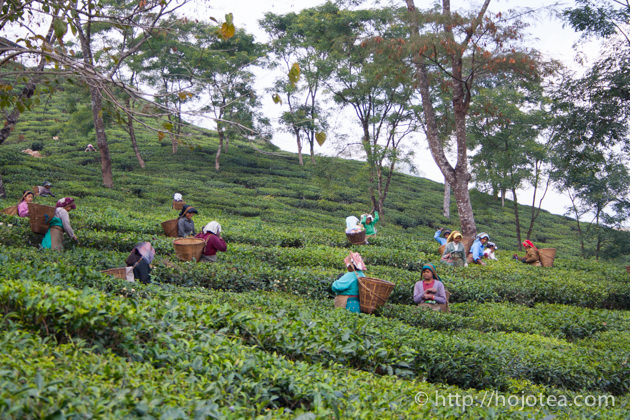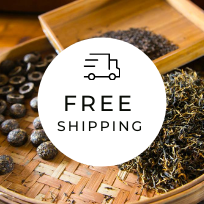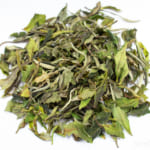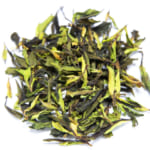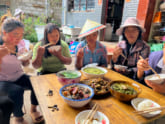- HOME >
- Tea Column
Easy way to understand the scientific name of tea
- [2015.01.15] Posted By Akira Hojo
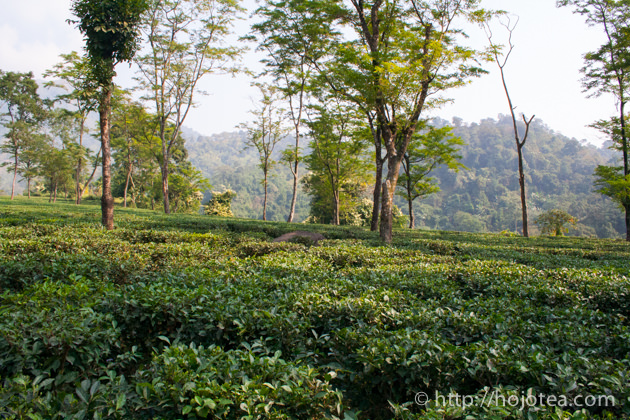
Tea is made of the plant called Camellia sinensis. But as you know, it is further classified into various types such as Assam, Yabukita, Tie Guan Yin, Shui Xian or China bush. Are these types considered as species or cultivar? I would like to explain the rules that classify the type of tea variety.
There is cultivar and variety under the species
In precise, tea plant is classified as follow. Regardless of oolong, green, pu-erh, black or white tea, the tea is basically made from the leaves of a plant called Camellia sinensis.
Family (科) Theaceae
Genus(属) Camellia
Species (種) Sinensis
Camellia sinensis means that genus is Camellia and the species is sinensis. Under the sinensis species, there are 2 types of sub-species: variety and cultivar. If you refer to the sub-species in both Chinese and Japanese, there will be some confusion. It is because of there is no distinction in both Chinese and Japanese language to differentiate between cultivar and variety. We only use one word “pin-zhong”「品種」 to describe both cultivar and variety.
Variety refers to the group that carries the homogenous genetic trait made by the natural selection of mutation
In botanical terminology, variety refers to the sub-species that a group of plants carry a single genetic trait on account of natural selection or mutation. Despite the plant is propagating by its own, every individual plant carries their own single characteristics. For example, the tea discovered in Assam area in India all have big leaves, higher poly phenol content and adapting to grow in tropical climate. If only one of the tea trees carries these characteristics, we do not call it variety, but all the trees has the same trait. In botanical terminology, the Assam tea is written as Camellia sinensis var. assamica. The variety is usually written as var. in the shorten form. The name Camellia sinensis var. assamica tells that this tea was naturally evolved and it does not involves any human’s efforts.
Cultivar refers to the tea made by the human’s selection
While the variety means homogenous characteristics made by the natural selection, the cultivar refers to a specific type of tea made by the cultivation by the human. For example, Tie Guan Yin cultivar, Shui Xian cultivar or Yabukita cultivar; these are a few examples of tea cultivars always been propagated by cloning. Thus, it is not called variety but cultivar. The tea tree produces seeds through sexual reproduction. That means the stamen and pistil of tea flower has to undergo crossbreeding in order to produce its seed. Usually if you plant a seed from Yabukita cultivar, the tea tree grown from this seed is not Yabukita cultivar. It will be something else as seed is made of the natural hybridization. The same theory goes with the fruit. Even if we plant the seed of Fuji apple, there will be another type of apple that grows from the seed. That is why once an ideal genetic trait is being found, the plant is propagated by the cutting (cloning). The plan that is propagated with cloning is categorized as “cultivar” in scientific term. It is written in the shorten form cv. or with single quotation as ‘Yabukita’.
After all, the scientific name of Yabukita will be as follow.
Camellia sinensis var. sinensis cv. Yabukita
Camellia sinensis var. sinensis ‘Yabukita’
What is Camellia sinensis var. sinensis?
In the above name of Yabukita, sinensis is repeated twice. You may wonder what the meaning of Camellia sinensis var. sinensis is. Camellia sinensis var. sinensis is referring to the group of tea that has originated from China. Since the first tea was found in China and these teas had small leaves, it was classified as variety. In Darjeeling, there are so-called China bush. These tea bushes were imported from China once upon a time. So the scientific name of these China bush in Darjeeling is also Camellia sinensis var. sinensis
Unclear scientific name of Darjeeling clonal tea
Nowadays, there are a number of tea cultivars modified from Assam variety. These cultivars are mainly used for making black tea. Since these tea plants were made from the Camellia Sinensis var. assamica by the crossbreeding, the name will be written as Camellia sinensis var. assamica cv. xxxxx. That means this is the tea cultivated by human using Camellia sinensis var. assamica. In Darjeeling, there are tea bushes called clonal. The Darjeeling clonal is referring to the tea propagated by cloning. That means it is the tea categorized as cultivar. However, most of them were crossbred between Assam Tea (Camellia sinensis var. assamica) and China tea (Camellia sinensis var. sinensis). I cannot imagine how the scientific name for these clonal teas are since it will be too long and complicated. That is why no one called Darjeeling clonal tea in the name of cultivar but just as a clonal tea.
Many prejudices with China variety
England has started the tea trading with China in 17th century. In those days, the crossbreeding has been already effectively practiced in China. For example, there are Phoenix cultivars such as Shui Xian, Ba Xian or Song Zhong which the age of tea trees are more than 500 years old. In 17th-19th century, English noticed that Chinese tea leaves were small and round shape and they concluded as “variety”. However, it is very likely that these teas they saw could have been the tea that was made by the hybridization. Considering the fact English were buying tea from Fujian province, they might saw the Shui Xian related cultivar and named them as China variety: Camellia sinensis var. sinensis. As a matter of fact, there are various sizes of tea leaves in China: small, medium and large. Somehow calling the Chinese tea as China variety: Camellia sinensis var. sinensis has a lot of prejudices.
Related Articles
How to get the latest update on HOJO Tea?
1. Follow Twitter, 2. Click "Like" on Facebook, and 3. Subscribe in newsletter. You can have the latest tea news from HOJO Tea.
 Subscribe the Newsletter to enjoy the privileges
Subscribe the Newsletter to enjoy the privileges- You may receive a free sample upon purchase, or you may have the priority to purchase special products. So please remember to subscribe our newsletter as well as the social network.
- Yunnan Chun Jian Green Tea from High Mountain Gardens
- Yunnan Chun Jian Green Tea is now available.This tea is made from naturally grown leaves harvested from high mountain gardens at 2100m above sea level. It has a rich, long-lasting lingering aftertaste, comparable to raw Pu-erh tea. Yunnan as a Distinctive Tea Growing Region Over the past 20 years, we have explored a wide range …
- Limited Loose Leaf Release of 2025 Da Xue Shan Wild Raw Pu-erh Tea
- We have released the 2025 loose-leaf version of Da Xue Shan Wild Raw Pu-erh Tea.This tea comes from wild tea trees that grow naturally in the high mountains of Yunnan Province, at elevations above 2000 meters. This year, we were only able to secure a small quantity for retail, and the current release is available …
NEW ARTICLES
 Yunnan Chun Jian Green Tea from High Mountain Gardens
Yunnan Chun Jian Green Tea from High Mountain Gardens- Yunnan Chun Jian Green Tea is now available.This tea is made from naturally grown leaves harvested from high mountain gardens at 2100m above sea level. It has a rich, long-lasting lingering aftertaste, comparable to raw Pu-erh tea. Yunnan as a Distinctive Tea Growing Region Over the past 20 years, we have explored a wide range …
 Limited Loose Leaf Release of 2025 Da Xue Shan Wild Raw Pu-erh Tea
Limited Loose Leaf Release of 2025 Da Xue Shan Wild Raw Pu-erh Tea- We have released the 2025 loose-leaf version of Da Xue Shan Wild Raw Pu-erh Tea.This tea comes from wild tea trees that grow naturally in the high mountains of Yunnan Province, at elevations above 2000 meters. This year, we were only able to secure a small quantity for retail, and the current release is available …
 2025 Da Xue Shan Wild White Tea Now Available from Yunnan
2025 Da Xue Shan Wild White Tea Now Available from Yunnan- The 2025 harvest of Da Xue Shan Wild White Tea is now available. Crafted from truly wild Camellia taliensis trees growing naturally in the high-altitude forests of Yunnan, this tea offers a purity and character unique to its origin. This year’s unusually dry climate during the withering season was ideal, resulting in a floral and …
 Why Do Some Teas Taste Astringent? Exploring the Causes and Mechanisms of Astringency
Why Do Some Teas Taste Astringent? Exploring the Causes and Mechanisms of Astringency- Tea can range from having no noticeable astringency to possessing a very strong one. What causes this astringency? This article explores the causes and mechanisms behind astringency in tea. Causes of Astringency Astringency arises from the binding of tea components to proteins in the oral cavity, creating a sensation of tightness or dryness. The tongue …
 The Impact of Heat Sources on Tea Flavor
The Impact of Heat Sources on Tea Flavor- It is widely recognized that the material of a kettle plays an important role in shaping the taste of water for brewing tea. Yet, an often overlooked but equally significant factor is the type of heat source used to boil the water. Different heat sources, whether gas, electric, charcoal, or wood fire, can impart distinct …
 New Release of High Mountain White Tea
New Release of High Mountain White Tea- We are pleased to introduce our High Mountain White Tea, sourced from a unique tea garden with two key features: 1. Located at an altitude of 2200-2300m2. Completely wild and untended The ideal natural conditions of this garden result in tea of exceptional quality, offering a pure and gentle, nourishing taste. High Altitude and Wild …
 New Release of Da Xue Shan Wild White Tea 2024
New Release of Da Xue Shan Wild White Tea 2024- We have released the 2024 Da Xue Shan Wild White Tea Loose Leaf. This tea was produced under our direct supervision during our stay in Yunnan Province, ensuring meticulous production management on site. Definition of Wild Tea in Yunnan Province People in Yunnan strongly associate Camellia taliensis with wild tea, regardless of where it is …
 New Release of Wild Pu-erh Jasmine Pearl
New Release of Wild Pu-erh Jasmine Pearl- Out of curiosity, we decided to create a jasmine tea based on Da Xue Shan Wild Raw Tea. This resulted in an exceptionally rare tea, not only in Japan but also in China. Custom Production Network for Jasmine Tea At our store, we source various types of base teas from different regions during the spring. …
 2024 Overview: Our Yunnan White Tea Quality, Process, and Weather Insights
2024 Overview: Our Yunnan White Tea Quality, Process, and Weather Insights- One of the teas we’ve been focusing on in Yunnan Province is white tea. Historically white tea has been produced in both Fujian Province and Yunnan Province for a long time. While white tea from Fujian Province is well-managed during processing, we are dissatisfied with the quality of the raw materials due to the use …
 Yunnan’s Hospitality Culture: Expressed Through Meals
Yunnan’s Hospitality Culture: Expressed Through Meals- In China, as a form of greeting, it’s common to say “你吃饭了吗?” which means “Have you eaten?” However, in Yunnan Province, the phrase “吃饭” is often used in various situations, more like “Eat, eat,” serving as an invitation to share a meal. Yet, with prolonged exposure to Yunnan, one comes to understand that these meal …
Shop Info

Address:Lot No. T-215, 3rd Floor, The Gardens Mall, Mid Valley City, Lingkaran Syed Putra, 59200 Kuala Lumpur
Tel: +603-2287-4537
Business Hour: 10am to 10pm
Category
- New Arrival at HOJO Online Shop
- Featured Articles
- Newsletter
- Types of Tea
- Origin of Tea
- Teapot and Tea Equipment
-
Tea Column
- How to enjoy tea
- Tea Processing
- How to choose quality tea
- Tea constituents and functional effect
- Safety of Tea
- Foods
- Tea Business Operation
- Hobby and Outdoor Activity
- Ranking of Tea
- Video
- FAQ
- Media Release
Profile

- AKIRA HOJO
- I invite you to experience my tea selections.I was born in Nagano, Japan. In university, I studied agricultural chemistry, and I have the master degree in food science. I worked in Japanese food industry for 10 years. I involved in R&D, QC and QA. As a factory manager, I implemented ISO9000 series and managed the factory.
- The Art of Tea Magazine
- We posted the article on “The Art of Tea Magazine No.9, the magazine is published in Taiwan. We featured some scientific view about the tetsubin
- New Straits Times
- The Malaysian National Newspaper, New Straits Times featured HOJO Tea on 17-Oct-2007.


